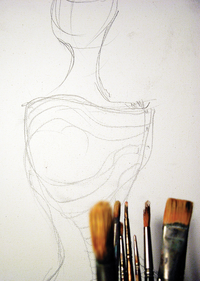Get Creative
Whether you're into audio, video, print, or something else, many projects are available for Linux to help you develop your artistic creativity. In this issue, we cover a few projects that stand out.

clarita – morguefile.com
Whether you're into audio, video, print, or something else, many projects are available for Linux to help you develop your artistic creativity. In this issue, we cover a few projects that stand out.
Linux is probably not the first operating system you'd think of when considering starting an artistic project. You may think Windows has more apps, or Mac more pedigree.
But, here's the thing: Development of open source applications for artistic creativity has exploded in the past 5 to 10 years. You would have to be very particular indeed not to find an app for your Ubuntu machine that didn't satisfy your personal artistic needs.
Not only that, some of these Free Software projects have gone mainstream in a big way. Take Blender [1], for example, the 3D editor, animator, renderer, and compositor. It is used far and wide in advertising, music videos, and film … and it is a standard package, installable with one click, from your Ubuntu repositories.
[...]